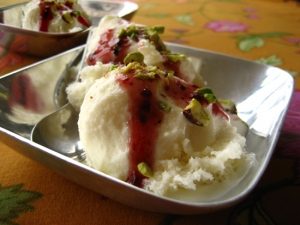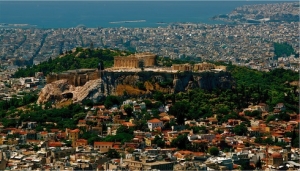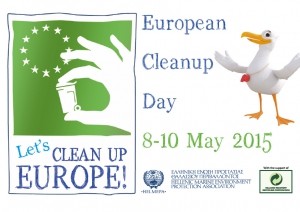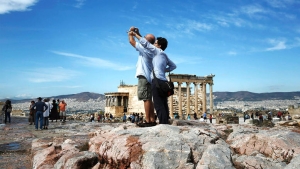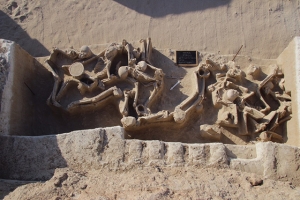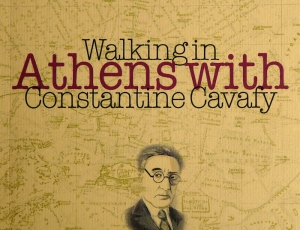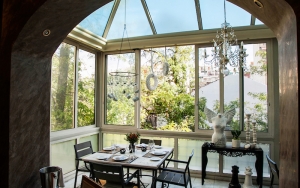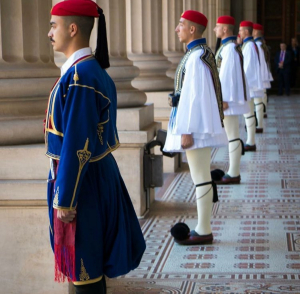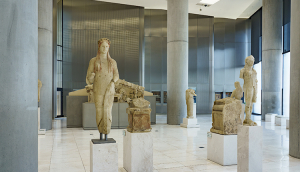XpatAthens
Kaimaki Ice Cream
In Greece we call this type of ice cream “kaimaki” and it very typical of 1960s style confectionery shops selling baklava and kataifi as well as other types of-usually syrupy- sweets, but the recipe is based on Diana Abu-Jaber’s book The Language of Baklava, which was the previous Cook the Books pick. It is very often served in silver-style bowls and I remember eating it after big meals with the family over ekmek kataifi or with ravani. I always thought that it tasted of the mastic, but Diana’s recipe revealed another very interesting ingredient: sahlep (we call it salepi in Greek).
This recipe is perfect for those avoiding egg-based ice cream and it will keep in the freezer for longer. Serve it on its own with sour cherry syrup called vissinada (another traditional Greek combination) and some pistachios.
KAIMAKI ice cream
• 1tsp salepi (sahlab) or 1tbsp corn starch
• 2 cups milk
• 2 cups heavy cream
• 1 1/4 cups sugar
• 1/4 tsp mastic powder
• chopped pistachios for decoration
DIRECTIONS
1. Dilute salepi in 1tbsp cold milk.
2. Bring milk, cream and sugar to boil, add salep (I used immersion blender because it wouldn’t dilute). Stir in mastic and simmer for 15 minutes, stirring constantly.
3. Add the slice of orange rind and remove from heat. Let it cool and place in the fridge. Churn in an ice cream machine.
4. Keep in the freezer until needed.
KALI OREKSI!
foodjunkie.eu
Athens Is # 3! Top 10 Destinations In Europe For 2015
20 selected destinations competed for the prestigious title of Best European Destination 2015. After a three week period of online voting (244,696 voters made their choice and influenced the result!), Bordeaux has been elected the Best European Destination 2015, followed by Lisbon second and Athens third!
Bordeaux, Lisbon, Athens, Valetta, Riga, Zagreb, Ljubljana, Innsbruck, Milan, Brussels, Vienna, Rome, Barcelona, Istanbul and Madrid are the next best destinations for a holiday or city-trip in 2015.
European Best Destinations describes Athens:
'Athens is considered the cradle of western civilization. Over the years, a multitude of conquerors occupied Athens, and erected unique, splendid monuments - a rare historical palimpsest, evident everywhere in the city.
The contemporary urban scenery of the sprawling city reflects its exciting history, its multi-cultural modern personality as well as the infrastructure and facilities. In other words, Athens is a must destination that combines modern urban innovation with history, culture and natural beauty throughout the year.'
XpatAthens would like to thank everyone who voted for Athens!
Greece Takes Part in ‘European Clean-up Day’ Campaign
Greek Tourism Thrives In 2015, Recording A 5.7% Rise In Arrivals
Archaeologists Study Skeletons From Ancient Cemetery At Phaleron
For more information about Phaleron and the excavation, please visit: Forbes
Walking In Athens With Constantine Cavafy
A Foodie Haven In Kerameikos, Athens
Photo Credit: Greece Is
May 1st - Happy May Day!
March 19 - Celebrating Greek Independence Day!
The Acropolis Museum’s Entire Collection Goes Digital
To read this article in full, please visit: ekathimerini.gr


